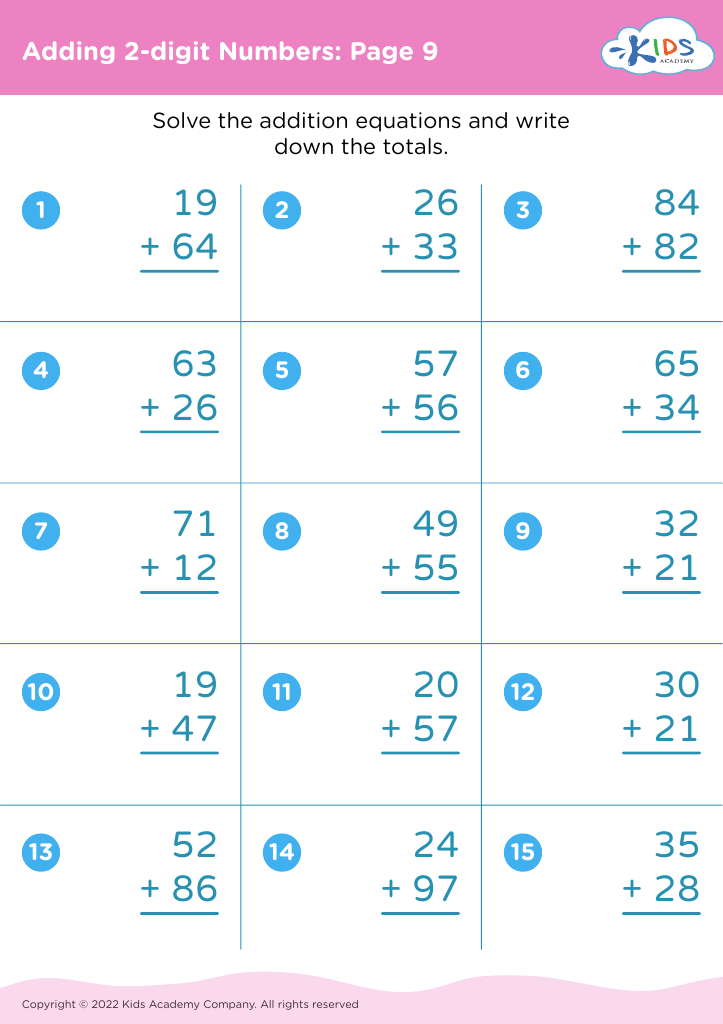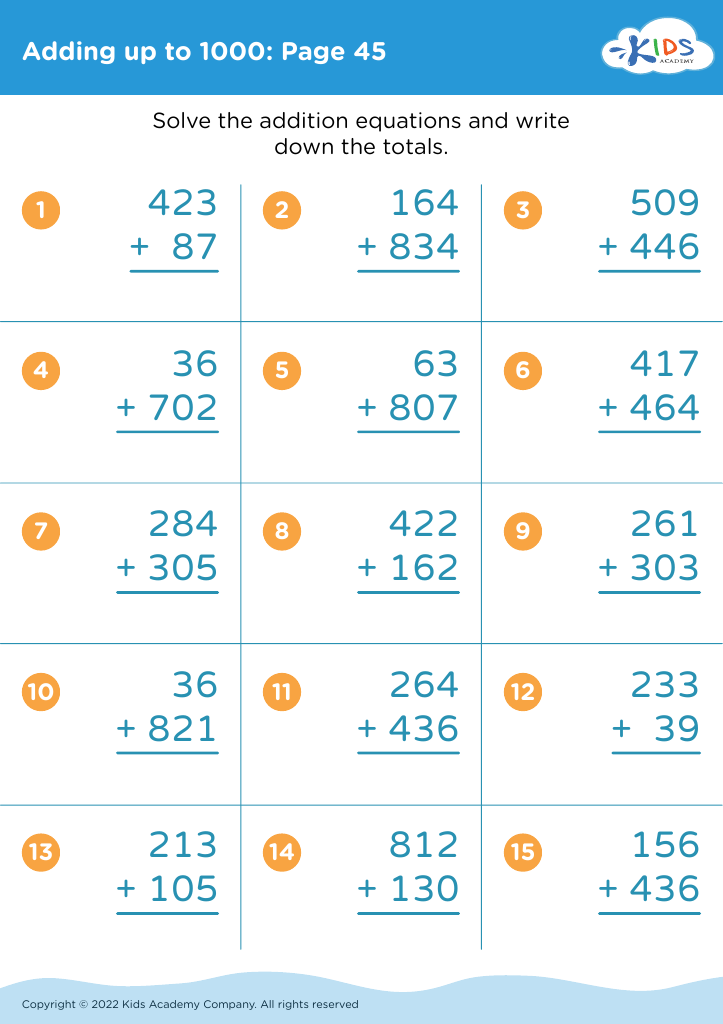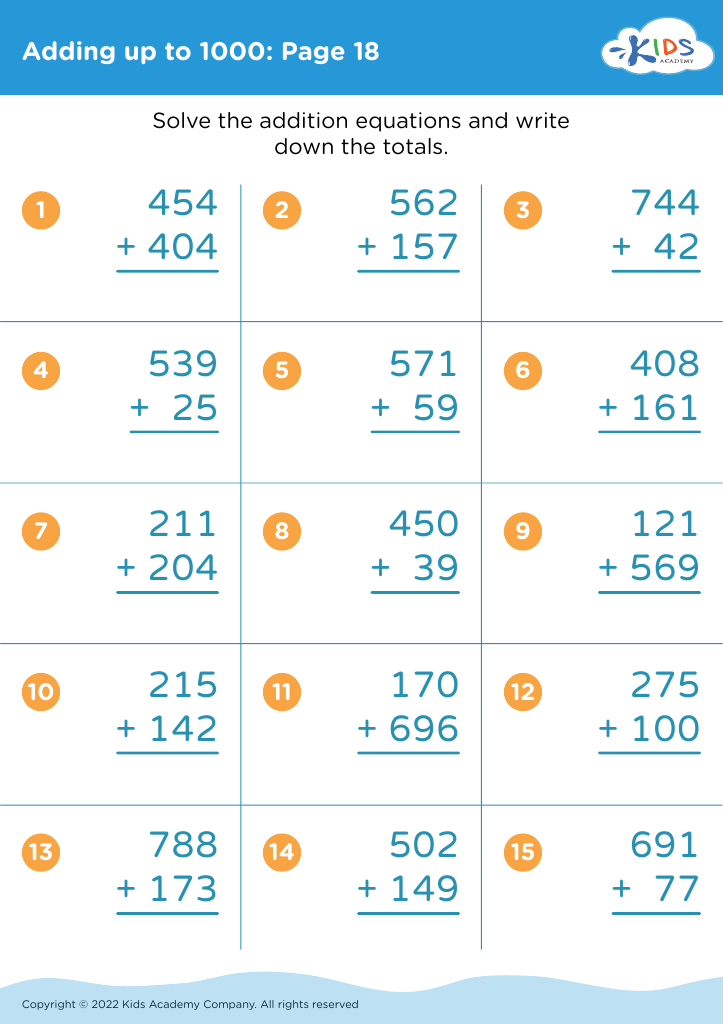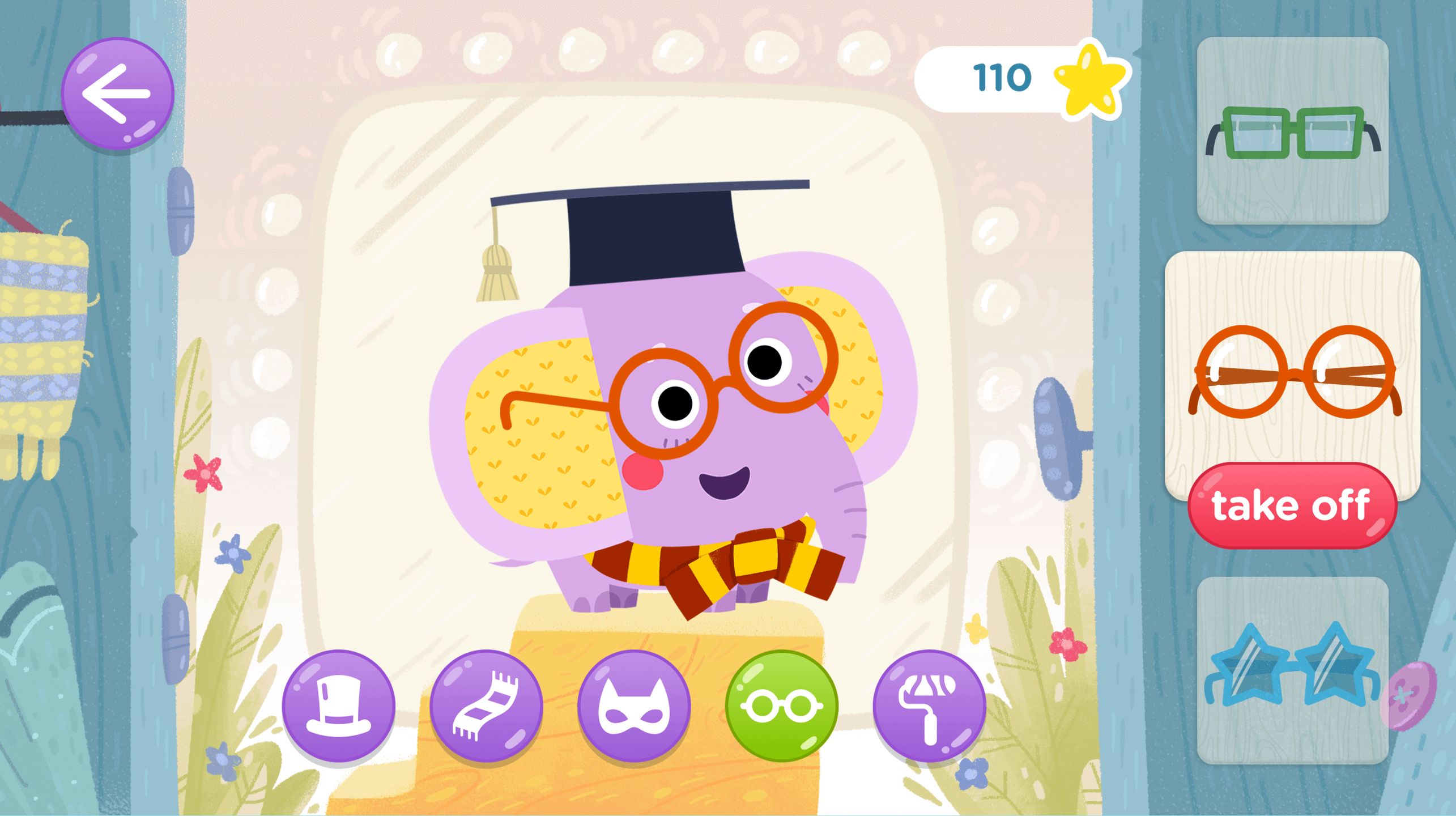Spatial awareness Addition & Subtraction Worksheets for Ages 7-8
6 filtered results
-
From - To
Enhance your child’s mathematical skills with our engaging Spatial Awareness Addition & Subtraction Worksheets for Ages 7-8. These thoughtfully designed worksheets help young learners develop a strong foundation in math concepts while improving their spatial awareness. With fun and visually stimulating exercises, your child will practice addition and subtraction in interactive ways that strengthen their ability to visualize relationships between numbers. Our resources not only foster essential math skills but also encourage critical thinking and problem-solving abilities. Perfect for at-home learning, these worksheets make math enjoyable and accessible, setting the stage for academic success. Download today and watch your child thrive!
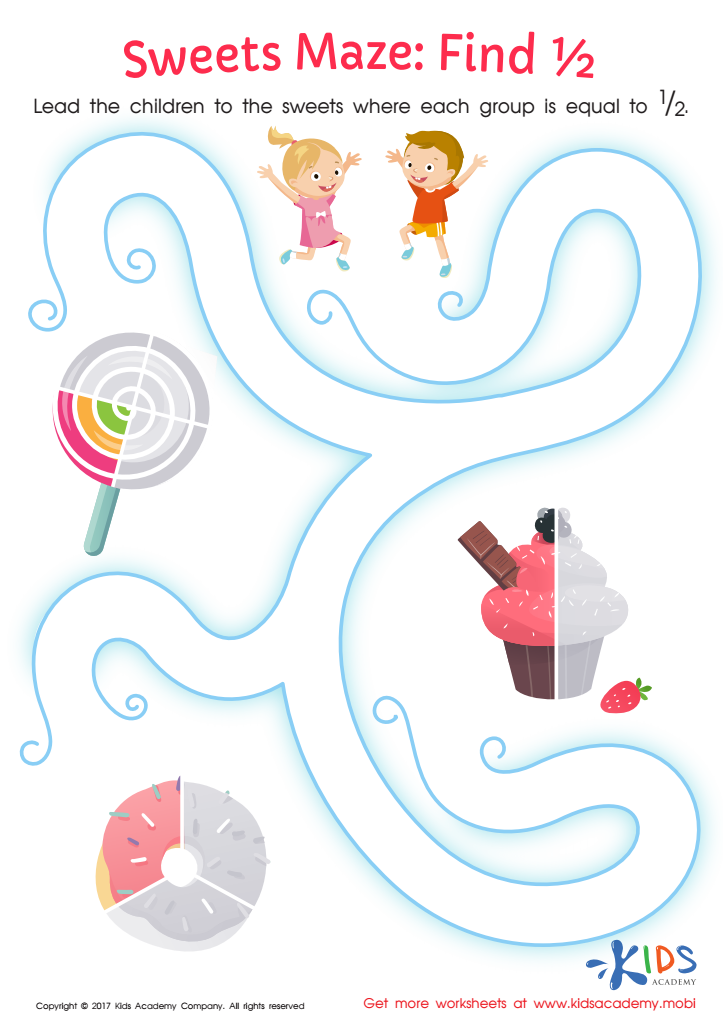

Fractions: Sweets Maze Worksheet
Spatial awareness is a crucial foundational skill that significantly impacts a child's ability to grasp basic math concepts, particularly addition and subtraction. For children aged 7-8, developing spatial awareness fosters a deeper understanding of numbers and how they relate to one another. It enhances their ability to visualize problems, leading to more effective problem-solving skills.
Parents and teachers should prioritize interventions and activities that promote spatial awareness, such as puzzles, building blocks, or geometry-related games. These activities not only reinforce mathematical concepts but also cultivate critical thinking and analytical skills. When children can visualize quantities manipulated in space, they are better equipped to understand abstract concepts and apply them in real-world scenarios.
Moreover, mastering addition and subtraction through a strong grasp of spatial relationships supports cognitive development, influencing other subjects like science and literacy. Children who excel in spatial reasoning often exhibit improved academic performance across the board.
In summary, emphasizing spatial awareness in conjunction with addition and subtraction fosters a more comprehensive understanding of math, promotes confidence, and prepares children for future learning and problem-solving challenges. This investment in their early mathematical journey reaps long-term benefits in their academic and cognitive development.
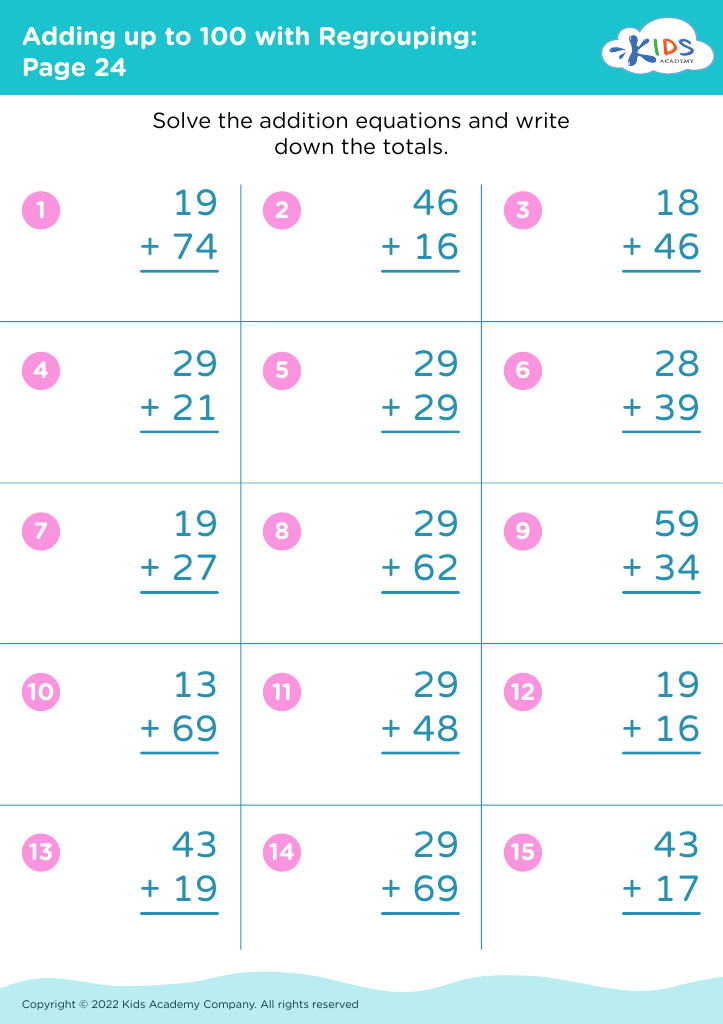

 Assign to My Students
Assign to My Students
